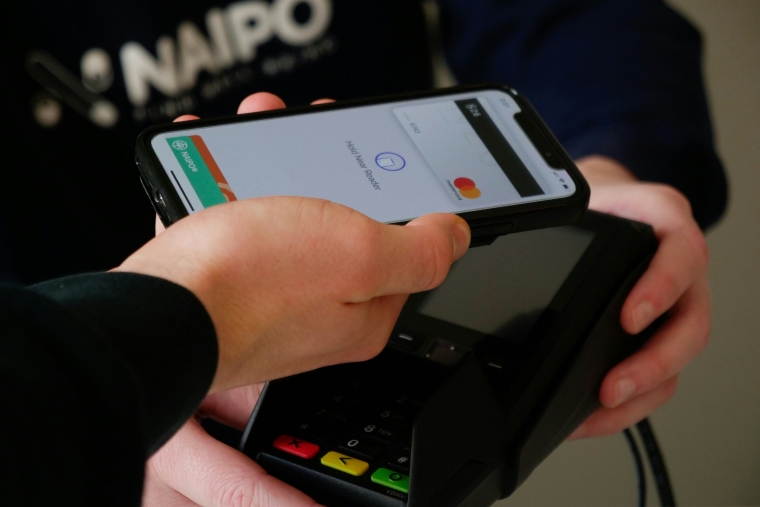
By David Cunningham*
In a nutshell
- The proposed ban on ‘tap and go’ payment surcharges is a poorly thought-out knee-jerk reaction by the government, and it will accelerate the decline of New Zealand’s world-class EFTPOS payment system.
- Banning surcharging would only be appropriate if least-cost routing (LCR) is first introduced and widely adopted among New Zealand retail merchants.
- LCR would allow retailers to automatically route eligible debit card transactions via the lowest-cost network – typically EFTPOS – without impacting the customer experience.
- Australia has established the blueprint—with its effective LCR rollout (mandated by the Reserve Bank of Australia) leading to widespread savings for merchants and a smooth experience for consumers.
- Without LCR, New Zealand’s retail payments system will be ‘gifted’ to Visa and Mastercard, with the help of Apple Pay and Google Wallet, and our EFTPOS network will rapidly decline.
EFTPOS vs. ‘tap and go’—how New Zealand’s payment system works
EFTPOS
When you swipe or insert your bank card at a merchant and enter your PIN, the transaction gets routed through New Zealand’s EFTPOS network—which, by the way, is one of the most efficient in the world.
The merchant pays a small daily fee for all EFTPOS transactions processed throughout the course of the day. The consumer, meanwhile, generally incurs no bank fees.
‘Tap & go’
By comparison, when you tap your debit or credit card (issued by a bank with either a Visa or Mastercard logo), the transaction gets routed through the Visa or Mastercard network.
The merchant’s bank charges them a fee—known as a merchant service fee—on each ‘tap and go’ transaction. This charge covers three main things:
- The fees the bank pays to Visa or Mastercard for processing the transaction.
- An interchange fee, which is essentially a payment that the bank issuing the debit card to the customer receives.
- The bank’s profit margin.
In other words, the simple and convenient act of tapping your card (or mobile device) instead of just inserting it significantly increases the cost of the transaction.
It’s absolute madness!
Over the past 20 years, Visa and Mastercard have been playing a long game—to take control of the New Zealand payments system by encouraging banks to replace EFTPOS cards with scheme-branded debit cards.
But in reality, they are dual-purpose cards that function as both EFTPOS and scheme debit cards.
The genius of the scheme lies in their requirement that only swiped or inserted cards be routed through the EFTPOS network.
It’s meant that as contactless technology has evolved—and customers have increasingly fallen in love with the convenience of it—these international payment giants have generated significant revenue from ‘tap and go’ transactions.
The rationale for surcharging
Let’s say a small retail business processes $80,000 in contactless debit card payments each month (approximately $1 million per year).
They could end up paying at least $6,000 more per year than they would if all transactions were routed through the EFTPOS network.
Therein lies the rationale for surcharging.
Applying a surcharge to ‘tap and go’ transactions allows retailers to recover that fee—essentially transferring the administrative cost of the payment to the customer instead.
But surcharging is about to be banned, without alleviating the burden on small businesses.
Businesses’ natural reaction will be to raise prices to cover this cost meaning all consumers (not just those that ‘tap and go’) will end up paying.
Let’s be honest, most of us prefer the convenience of tapping our card, mobile phone, or wearable device to pay. However, the way New Zealand’s payment system currently works makes it unnecessarily costly.
The solution is least-cost routing (LCR)
Most New Zealand debit cards already support dual-network functionality, and the EFTPOS infrastructure is in place.
What’s needed is regulatory support, industry coordination and collaboration, and technical upgrades to enable contactless EFTPOS and mobile wallet integration.
What would that look like?
- The Commerce Commission—could designate the EFTPOS system and then introduce a Network Standard under the Retail Payment System Act to mandate LCR and prohibit anti-competitive routing rules.
- The Reserve Bank (RBNZ)—can support this from a system resilience perspective (reducing our reliance on US/global payment systems).
- Payments NZ, Worldline NZ (which runs our EFTPOS network), and major banks must then collaborate on implementation.
Benefits of LCR include reduced merchant costs, removal of surcharges and hidden fees, support for EFTPOS (national resilience), increased competition and innovation, continued consumer convenience, alignment with policy objectives, and consistency with Australian standards.
Many developed economies use domestic debit systems or enforce routing choice to control fees.
Australia, the UK, EU, US, Canada, and Scandinavian countries all provide insights into balancing cost, competition, and consumer experience.
New Zealand has the infrastructure but needs to adapt it to develop a fairer and more efficient payment system for merchants and consumers.
Implementation
The implementation roadmap would look something like this:
- Mandate and mobilise: Regulatory groundwork and industry coordination.
- Technical build & pilot: System upgrades, mobile wallet integration, and pilot testing.
- Gradual rollout: Nationwide merchant adoption, ideally aligned with surcharge ban.
- Refinement & monitoring: Ongoing oversight, reporting, and system improvements.
Conclusion
LCR is a feasible reform that aligns with New Zealand’s values of fairness, efficiency, and innovation.
By learning from Australia and working together with regulators and industry, New Zealand can put LCR into practice to make sure that the advantages of modern payments are shared by everyone—consumers, merchants, and the wider economy.
With contactless payments here to stay, adopting LCR would ensure they’ll work for New Zealand, not just global card companies.
However, it must be led by the government through mandating LCR (and regulating interchange). There is no evidence worldwide of improved outcomes without regulation.
Then, and only then, would banning ‘tap and go’ payment surcharges on debit card transactions make sense.
*David Cunningham is "Chief Squirrel" at financial services company Squirrel, and a former CEO of The Co-operative Bank and manager at Westpac NZ.
The opinions expressed in this article should not be taken as financial advice, or a recommendation of any financial product. Squirrel shall not be liable or responsible for any information, omissions, or errors present. Any commentary provided are the personal views of the author and are not necessarily representative of the views and opinions of Squirrel. We recommend seeking professional investment and/or mortgage advice before taking any action.
7 Comments
Let’s be real. This is nothing but a favour to Mr Key and the big banks. It has nothing to do with looking out for the consumer.
Exactly. Card fees to merchants of 30 cents per transaction plus circa 3% for paywave or credit cards Vs 20 cents for EFTPOS
There's no free market without choices and informed buyers. This proposal eliminates both for card payment methods
Great article David. Totally agree. Hope this gets some adequate mainstream media coverage.
Totally agree.
Great article.
If you can get Hobsons pledge, or the Taxpayers union, to put put a couple of press releases, it will become law :)
I’d remove the cost to reseller and force the card companies to make their profit off the card holder instead.
There is obviously a cost to pay wave, someone has to pay for stolen cards that get tapped, it should be an insurance the card holder pays.
Let's hope the Reserve Bank, Commerce Commission and Nicola Willis read this insightful article and implement the recommendation. As Donald Trump says, 'free trade is not wanted; fair trade is'.

We welcome your comments below. If you are not already registered, please register to comment
Remember we welcome robust, respectful and insightful debate. We don't welcome abusive or defamatory comments and will de-register those repeatedly making such comments. Our current comment policy is here.